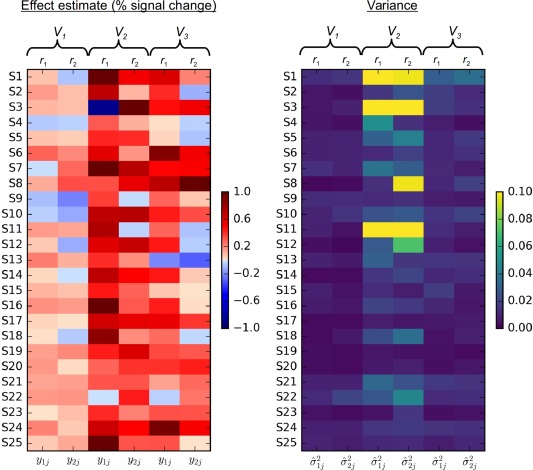Figure 4.

Example illustrations of heterogeneity and heteroscedasticity at three voxels with results shown in Table 4. Effect estimates (left) during the two sessions (r 1 and r 2) and the corresponding variances (right) for the measurement errors for the 25 subjects at three gray matter voxels (V 1, V 2, and V 3) from the axial slice shown in Figure 1. The real data are listed in Appendix A. Substantial session effect can be seen in voxel V 2 (left matrix, middle two columns) while the session effect is negligible at voxels V 1 and V 3. A large amount of variability exists for the effect estimates at voxel V 1 (left matrix, first two columns), leading to negative ICC estimate by ANOVA and zero by LME, while RME manages to deal with the degenerative situation with a small, but positive, ICC estimate. MME provides a positive and relatively large ICC estimate through weighting based on the precision information (right matrix, first two columns). The variability for the precision of the effect estimate is moderate at voxel V 2 (right matrix, middle two columns), but minimal at voxel V 3 (right matrix, right two columns) [Color figure can be viewed at http://wileyonlinelibrary.com]
